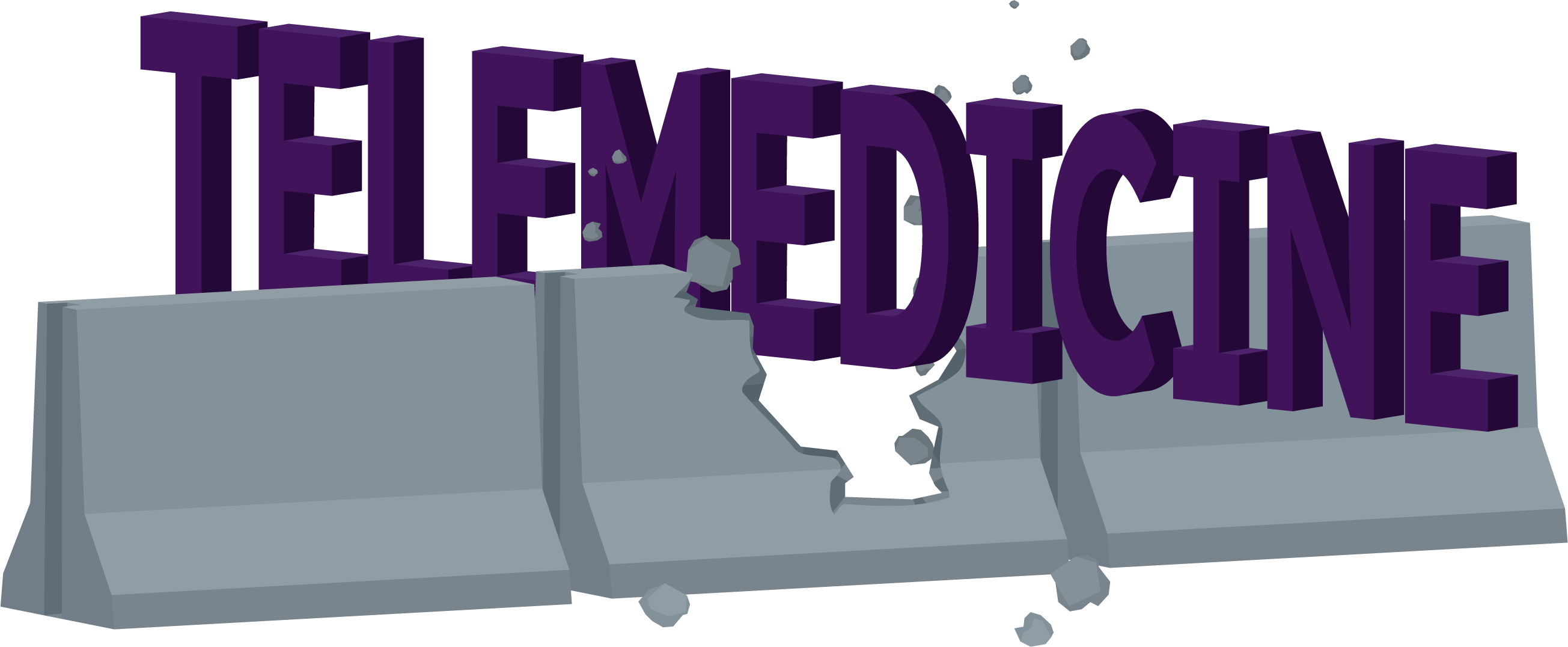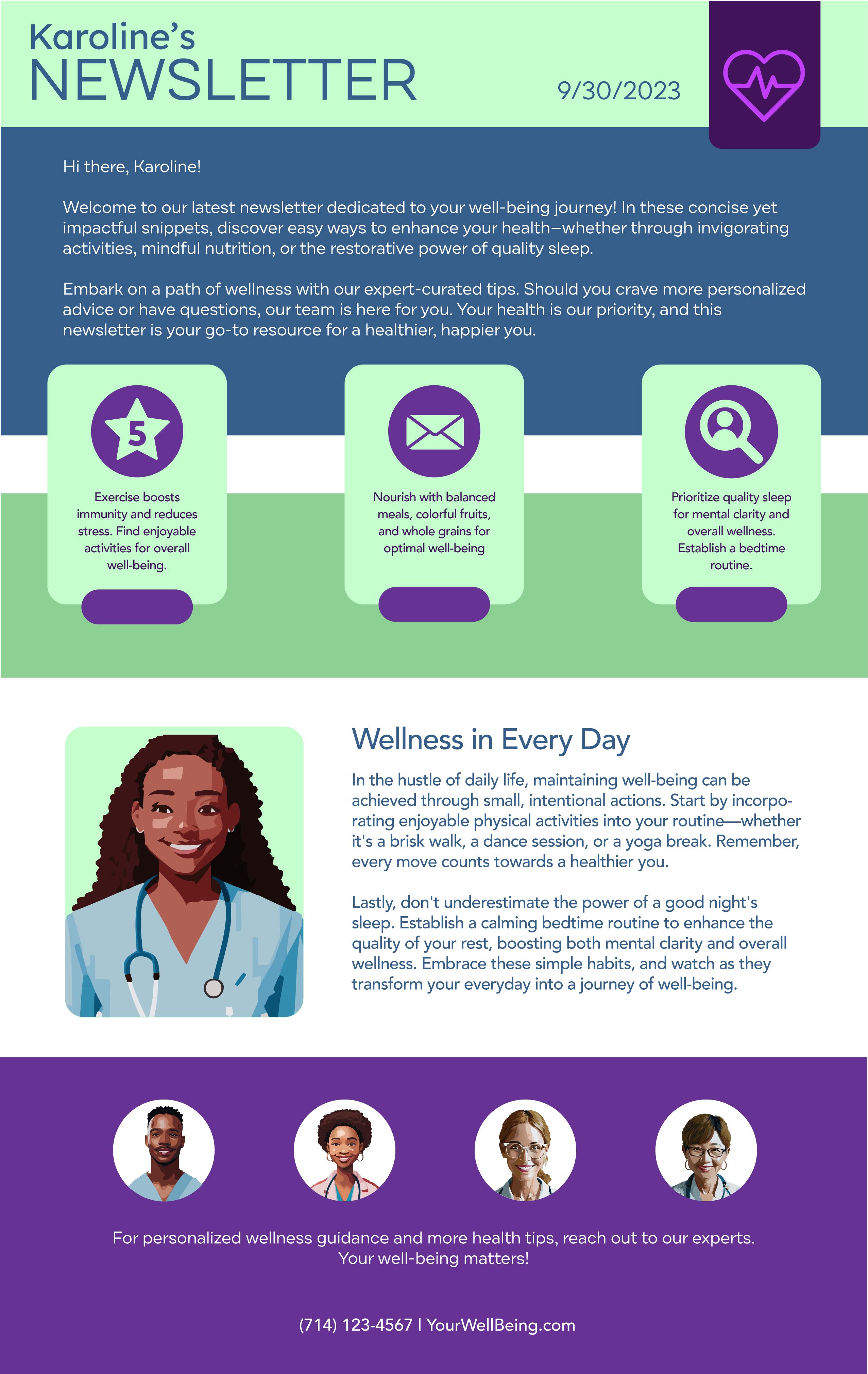The outbreak of COVID-19 in 2020 marked a significant shift in how we approach healthcare, particularly in the rise of telemedicine. This growth was driven by two key factors — rapid advancements in technology and the restrictions on in-person medical visits during the pandemic. Initially, telemedicine served as a necessary alternative, but it quickly grew into an essential part of our healthcare system.
A question followed this transformation — Would telemedicine merely be a trend, or would it become a fundamental component of healthcare beyond the pandemic?
A Statista report shows that the telemedicine market, worth about $50 billion in 2019, is expected to reach nearly $460 billion within the next decade, underscoring the growing role of telemedicine in modern healthcare. Moreover, in February 2023, the Drug Enforcement Administration (DEA) made a significant move by proposing rules to allow the prescribing of controlled medications via telemedicine. This gives patients more options and shows that telemedicine is becoming a long-term solution, not just a temporary fix during the pandemic. Finally, the proportion of patients who reported that telemedicine provides the same or better quality of care as compared with in-person visits increased from 40% in 2020 to 55% in 2021. Among those with chronic diseases, over 67% of surveyed patients labeled telemedicine as a positive and acceptable substitute for in-person appointments, highlighting its growing acceptance and effectiveness in managing long-term health conditions.
All of this points to the need for everyone in the healthcare sector to recognize and adapt to the evolving landscape of telemedicine. As the field continues to grow, integrating effective telemedicine marketing strategies becomes crucial if you want to meet the changing demands and preferences of your patients.
Maximize Patient Reach and Care with Telemedicine
Telemedicine works using advanced technologies and devices to provide remote care by implementing remote clinical services. In other words, you can leverage software to exchange sensitive medical information, conduct e-visits, make diagnoses, provide treatment, monitor vitals, prescribe medications, or even prevent diseases. At the same time, this approach isn’t limited to any single medical specialty. Telemedicine is versatile, finding its use in areas like primary care, neurology, pediatrics, and physical therapy, among others.
One of the most significant benefits of telemedicine is its ability to reach people in underserved areas. For many living in remote or rural locations, access to specialized doctors or necessary medical equipment is a challenge. Telemedicine breaks down these barriers, providing essential healthcare services to those who might otherwise go without them because of physical isolation, lack of proper equipment, or transportation issues. This both benefits patients in need and allows you to extend your reach to people you otherwise couldn’t.
healthcare services to those who might otherwise go without them because of physical isolation, lack of proper equipment, or transportation issues. This both benefits patients in need and allows you to extend your reach to people you otherwise couldn’t.
Also, in today’s fast-paced world, where people juggle multiple roles and responsibilities, telemedicine offers a way to access healthcare that fits into busy schedules. It eliminates the need for commuting, waiting in lines, or rearranging personal or professional commitments. As such, it makes healthcare more accessible and less disruptive to daily life.
Moreover, the aspect of anonymity in telemedicine plays a crucial role, especially in addressing the stigma associated with certain health conditions. According to BioMed Central Ltd, stigma is a major barrier to seeking and adhering to treatment across various health conditions. Telemedicine offers a degree of privacy that can be vital for individuals dealing with mental health issues, HIV/AIDS, STDs, or other stigmatized diseases. The ability to consult with healthcare providers discreetly, outside one’s immediate community or from the privacy of home, can be a decisive factor in seeking and receiving healthcare.
Telemedicine Marketing Strategies
The remarkable benefits of telemedicine, from enhancing accessibility in remote areas to providing flexible and private healthcare solutions, have not only transformed patient care but also opened new opportunities for telemedicine marketing. As you embrace telemedicine, you must also adapt your marketing strategies to resonate with its unique advantages and conveniences.
Attract and Convert Patients with Compelling Messaging
Awareness is a key challenge in telemedicine marketing. Many people are either unaware or skeptical of telemedicine as a viable care option and this presents both a challenge and an opportunity for you to adapt marketing strategies.
Virtually explaining to a doctor your medical symptoms outside of a sterile and familiar office may be a scary experience for many. That’s why you need to figure out what may hold your patients back from using telemedicine and make them feel understood by speaking to their needs with a compelling message that is educational, reassuring, and helpful.
Don’t forget that each of your patients comes with their own set of unique challenges and needs. For example, the approach you take for marketing telemedicine to parents seeking pediatric care will differ significantly from that for elderly patients needing physical therapy. Your messaging should be directly aligned with these unique patient needs, offering realistic and empathetic solutions.
Educate Patients to Empower Them
Building trust and credibility is crucial in telemedicine marketing and you can achieve this by developing content that addresses patients’ questions and doubts.
A comprehensive landing page dedicated to telemedicine, explaining its process and addressing FAQs, is invaluable. It can include details like insurance coverage, cost comparisons with traditional visits, and the quality of care. In addition to this, you can create step-by-step guides or video tutorials that bring patients through every step of the patient journey and detailed profiles of healthcare providers they may encounter. This content should help patients understand telemedicine and make it more accessible and less intimidating.
Inspire Confidence with Success Stories
Nothing strengthens patient confidence like seeing success stories from other patients like them. To make the most out of this telemedicine marketing strategy, start by reaching out to patients who have had positive experiences with your telemedicine services, communicate clearly how their testimonials will be used, and offer them the option to remain anonymous. Whether through direct contact or patient surveys, collecting these stories and experiences is an effort with a dual purpose.
First of all, this provides authentic content that illustrates to prospective patients that telemedicine is a practical and beneficial healthcare option used by people just like them. Secondly, the process of gathering success stories offers an opportunity for you to gain insights into your telemedicine services. Patients’ experiences can reveal areas where your services work well and areas that might need improvement.
Promote Telemedicine through Paid Advertising
Reaching potential patients who may not be aware that telemedicine is an option for their healthcare needs is an essential part of your telemedicine marketing strategy, and paid advertising allows you to do so in a timely and cost-efficient way.
Make sure your Google Business Profile (GBP) is accurate and up to date with your telemedicine services prominently displayed. Use clear, descriptive copy and appropriate keywords in your Google Ads to effectively communicate your services. The goal is to be engaging and make the process of scheduling a telemedicine appointment straightforward.
With 3.96 billion active monthly users, Meta’s platforms are powerful tools for telemedicine marketing, offering different ways to connect with different audiences. For example, Facebook is ideal for sharing patient success stories and answering common questions about telemedicine, helping patients understand the service. Its broad user base makes it a valuable tool for reaching a wide demographic. On the other hand, Instagram is perfect for visually engaging content like short videos, infographics, and eye-catching images that highlight the benefits and ease of telemedicine.
Additionally, platforms like TikTok, although newer, have a rapidly growing user base and can be used for telemedicine marketing, especially to connect with younger patients. TikTok’s short-form video content allows for creative, engaging ways to inform and attract patients, using trends and influencers to enhance visibility and appeal.
While promoting posts on these platforms, it’s important to target your audience based on specific criteria like demographics, interests, and behaviors to ensure your message reaches the right people. This targeted approach is crucial in making your telemedicine marketing efforts more effective.
Optimize Patient Journey for Higher Conversions
A seamless digital experience is critical in converting interest into actual telemedicine appointments. This includes optimizing the patient journey from the ad click to the appointment booking. For example, when a user clicks on an ad about mental health services you offer through telemedicine, the link should take them straight to a page that details these specific services. This way, you meet the user’s interest with immediate and relevant information, increasing the likelihood of them taking the next step.
Also, communication plays a vital role in guiding patients through the process. Make sure to include clear instructions, log in details, and a backup plan in case of technical difficulties. In case a patient encounters issues with the video session, they should have clear instructions on alternative steps or who to contact for assistance.
Engage Existing Patient Base

Finally, don’t overlook your existing patient base in your telemedicine marketing efforts because they already know and trust your services. Communicating telemedicine options through personalized emails, newsletters, and targeted ads can be very effective.
When communicating with different patient segments, it’s important to tailor your message to their specific needs and preferences. For example, during reminder calls for upcoming appointments, you can introduce telemedicine as a convenient alternative, guiding patients on how to switch to this mode of care.
For patients less familiar with technology, consider alternative methods like print campaigns or direct phone calls to assist them in understanding and using telemedicine services. Don’t forget that these materials should also be designed with clear, empathetic, and actionable content, focusing on the ease and benefits of using telemedicine.
Lead the Way in Digital Healthcare Transformation
Initially a necessity during challenging times, telemedicine has firmly established itself in the healthcare landscape. More and more, patients are choosing virtual consultations for routine check-ups, prescription refills, and minor health issues, favoring the convenience and accessibility of telemedicine over traditional in-person visits.
This shift doesn’t reduce the role of traditional healthcare. Instead, it complements it, offering a broader range of options to patients. As telemedicine continues to evolve and redefine the norms of healthcare delivery, you must stay ahead of the curve. Effective telemedicine marketing is key in this journey, enabling you to maximize your resources, extend your reach, and provide enhanced care to a larger patient base.
To take your telemedicine marketing efforts to the next level, consider using SocialClimb’s healthcare marketing platform. It’s straightforward to use, helping you attract and keep patients while keeping their information secure and complying with HIPAA regulations. SocialClimb’s transformative features help you refine your marketing to meet the changing needs of healthcare delivery and patient preferences. This also shows your commitment to innovation and patient-focused care, making you stand out in an increasingly competitive field.











